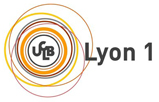How accurate are the detected communities in Real Networks?
| Quand ? |
Le 23/11/2015, de 14:00 à 15:00 |
|---|---|
| Où ? | Salle de Conseils (site Monod 2nd floor) ENS de Lyon |
| Ajouter un événement au calendrier |
|
Abstract:
The Internet is composed of routing devices connected between them and organized into independent administrative entities: the Autonomous Systems. The existence of different types of Autonomous Systems (like large connectivity providers, Internet Service Providers or universities) together with geographical and economical constraints, turns the Internet into a complex modular and hierarchical network. This organization is reflected in many properties of the Internet topology, like its high degree of clustering and its robustness.
In this work, we study the modular structure of the Internet router-level graph in order to assess to what extent the Autonomous Systems satisfy some of the known notions of community structure. We show that the modular structure of the Internet is much richer than what can be captured by the current community detection methods, which are severely affected by resolution limits and by the heterogeneity of the Autonomous Systems. Here we overcome this issue by using a multiresolution detection algorithm combined with a small sample of nodes. We also discuss recent work on community structure in the light of our results.










